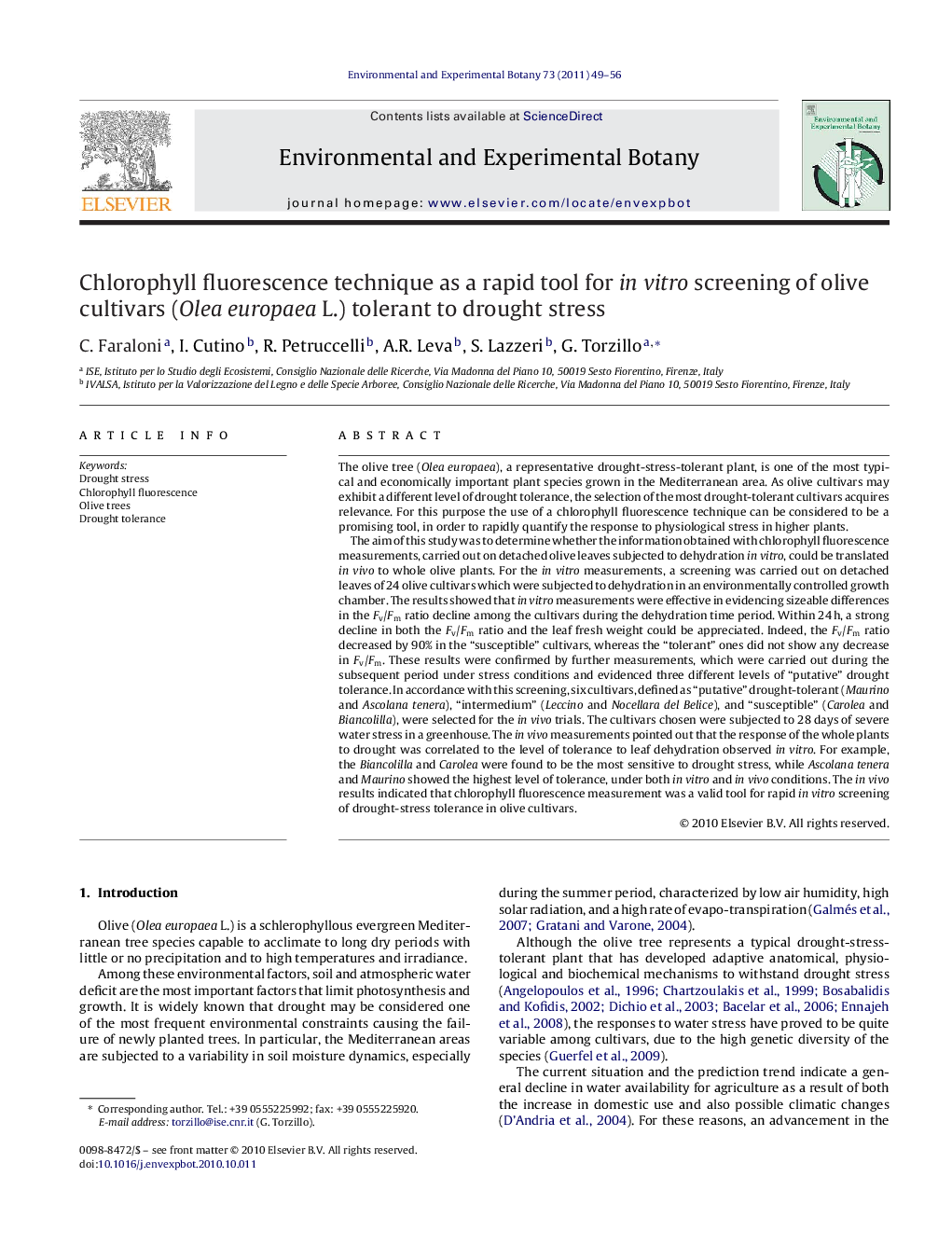| کد مقاله | کد نشریه | سال انتشار | مقاله انگلیسی | نسخه تمام متن |
|---|---|---|---|---|
| 4554872 | 1628104 | 2011 | 8 صفحه PDF | دانلود رایگان |

The olive tree (Olea europaea), a representative drought-stress-tolerant plant, is one of the most typical and economically important plant species grown in the Mediterranean area. As olive cultivars may exhibit a different level of drought tolerance, the selection of the most drought-tolerant cultivars acquires relevance. For this purpose the use of a chlorophyll fluorescence technique can be considered to be a promising tool, in order to rapidly quantify the response to physiological stress in higher plants.The aim of this study was to determine whether the information obtained with chlorophyll fluorescence measurements, carried out on detached olive leaves subjected to dehydration in vitro, could be translated in vivo to whole olive plants. For the in vitro measurements, a screening was carried out on detached leaves of 24 olive cultivars which were subjected to dehydration in an environmentally controlled growth chamber. The results showed that in vitro measurements were effective in evidencing sizeable differences in the Fv/Fm ratio decline among the cultivars during the dehydration time period. Within 24 h, a strong decline in both the Fv/Fm ratio and the leaf fresh weight could be appreciated. Indeed, the Fv/Fm ratio decreased by 90% in the “susceptible” cultivars, whereas the “tolerant” ones did not show any decrease in Fv/Fm. These results were confirmed by further measurements, which were carried out during the subsequent period under stress conditions and evidenced three different levels of “putative” drought tolerance. In accordance with this screening, six cultivars, defined as “putative” drought-tolerant (Maurino and Ascolana tenera), “intermedium” (Leccino and Nocellara del Belice), and “susceptible” (Carolea and Biancolilla), were selected for the in vivo trials. The cultivars chosen were subjected to 28 days of severe water stress in a greenhouse. The in vivo measurements pointed out that the response of the whole plants to drought was correlated to the level of tolerance to leaf dehydration observed in vitro. For example, the Biancolilla and Carolea were found to be the most sensitive to drought stress, while Ascolana tenera and Maurino showed the highest level of tolerance, under both in vitro and in vivo conditions. The in vivo results indicated that chlorophyll fluorescence measurement was a valid tool for rapid in vitro screening of drought-stress tolerance in olive cultivars.
Research highlights▶ We used Chl fluorescence measurements to monitor drought stress in olive plants. ▶ Fv/Fm was an useful parameter for screening in vitro olive cvs tolerant to drought. ▶ In vitro measurements on detached leaves could be translated to whole olive plants.
Journal: Environmental and Experimental Botany - Volume 73, November 2011, Pages 49–56